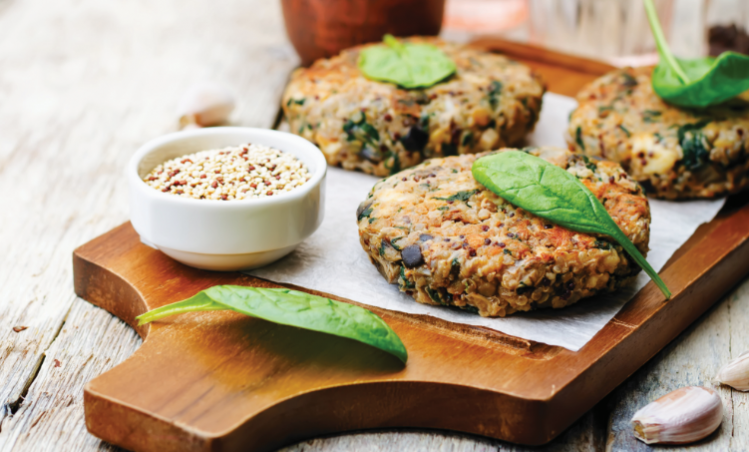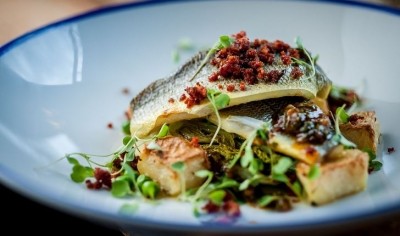Trends
Healthy food options: what's coming in 2016?

According to a new report by British supermarket chain Waitrose, which delves into the nation’s eating and drinking habits, health was the predominant concern among consumers in 2015, with more people turning their backs on conventional sources of health advice and becoming their own ‘experts’ on what’s healthy and what’s not when it comes to food and drink.
The Waitrose Food and Drink Report 2015, published in October and compiled using a series of in-depth focus groups and comprehensive consumer research, found that eight out of 10 of us no longer like to be told what we should be eating, with 60% of people instead setting their own health boundaries.
And while 91% of people surveyed believed in the saying “everything in moderation”, the findings of the report saw customers adopting a credit/debit approach to eating and drinking, balancing every treat with something healthy, with, according to the company’s annual sales patterns, “a significant move towards Dry January for many people — more so than in previous years”. Add to this the proposed sugar tax and a future requirement on food businesses to provide nutritional information for the food they serve, healthy eating has never been positioned more at the forefront of chefs and licensees’ minds than it is today.
In light of this healthier food climate, and with January fast approaching — bringing with it the all-too-common post-festive season drop in sales, the challenge for licensees seems to be to persuade customers that it’s possible to eat out and still be healthy, without the need to over indulge. One such method is to offer customers something that is both healthy and different.
In a bid to encourage chefs and licensees to harness the New Year’s resolution mindset and turn it into something fun, the Publican’s Morning Advertiser (PMA) is relaunching #TryJanuary campaign. This is to encourage pubs and bars to rethink the first month of the year and use it to expand their repertoire, healthy or otherwise, making the month more inspiring and experimental and encouraging people out to try new drinks and dishes.
PMA drinks and content editor Jessica Mason says: “... during the years, abstain campaigns have encouraged people to think that the only way to be a better version of themselves is to give something up. The #TryJanuary campaign aims to challenge people to simply try something new at their local. To step out of their comfort zone and, rather than ordering their ‘usual’, to go for something that they haven’t tried before.
“There is an opportunity here for everyone to expand their repertoire and for the trade to begin listing some interesting options.”
Pubs and bars wanting to draw attention to the new drinks or dishes they think people should try in their venue should post images on social media, using the hashtag #TryJanuary, to create a new year buzz and give people reasons to come out to socialise.
What’s hot for 2016?
Looking for inspiration? As part of its food and drink report, Waitrose also looked ahead to 2016 and predicted what trends it believed were to come. According to the retail giant, golden berries, a relatively unknown nutrient-packed Peruvian berry, are set to become the next ‘superfood’. While Persian cooking, already trending this year, is set to go mainstream in 2016.
Sprouting seeds will be another nutrient-rich must-have for pub and restaurant menus while, with the Rio Olympics due to take place next year, Brazilian barbecue will be a new trend — think Picanha joints and Caipirinhas. Con-fusion food — taking a traditional dish and altering it in an unusual way — and home-smoking are also set to become red hot in 2016.
According to market researchers Mintel, alternatives to meat and dairy will be the top of consumers’ priorities in 2016. Demand for more veggie burgers and non-dairy milks tops the organisation’s list of 12 food and drink trends food businesses should consider next year. Other key trends for the foodservice industry include:
- For Every Body: a trend that recognises consumers’ rising interest in fitness and provides an opportunity for food businesses to create new dishes that have added nutrients.
- Diet by DNA: An interest in the natural and ‘getting-back-to-basics’ has boosted ancient grains and superfoods, fostering a principle that age-old staples are better than today’s manufactured options.
- Fat sheds stigma: Consumers’ awareness of the many sources of good and bad fats has led to a shift in opinion in which fat content is not the first and foremost consideration in the search for healthy food.
- Eat With Your Eyes: More visual and share-focused societies call for innovation that is boldly coloured and artificially constructed. Businesses can experiment with vibrant colours and novel shapes to make their offerings worthy of consumer praise and social media posts.
And what’s not hot?
More than a third of people interviewed by Waitrose, who had set themselves targets to become healthier this year, had done so by cutting down on sugar. The company reported decreasing sales of white granulated sugar, with customers making clever choices to reduce their overall sugar intake. “It’s almost as if sugar is the new fat,” says Jonathan Moore, the company’s executive chef. “It’s the ingredient that people are really starting to focus on.”
Customers were instead found to be experimenting with naturally sweet ingredients, such as date nectar and maple syrup, which they need less of because of the added flavour, while others, the report suggests, are cutting out sugar entirely.
One licensee keen to embrace the lower sugar trend is Ashley McCarthy of North Yorkshire pub, Ye Old Sun Inn, in Colton, Tadcaster. The chef-owner will be altering the pub’s afternoon tea offer from January to include cakes with a reduced sugar and fat content. A gluten-free sandwich option is also planned.
Great ideas:
To give you some ideas of what to offer in terms of healthier drinks and dishes to capture January trade, this is what some pubs are up to...
Alongside its lower sugar and fat and gluten-free afternoon tea offering, the Ye Old Sun Inn, Tadcaster, North Yorkshire, plans to expand its cocktail menu by providing more non-alcoholic options. “We’ll be using vegetable, nut, grass and fruit-based ingredients to encourage the theatre of the cocktail-making for those people who are cutting out alcohol,” licensee Ashley McCarthy explains.
At Buckinghamshire pub, the Broad Leys in Aylesbury, licensee Helen Wood has been offering a healthy option dish, which changes daily, for the past four years. She first introduced the idea to help customers with their post-Christmas detox. “A healthier meal allows them a guilt-free treat and encourages them to continue eating out during the quieter month of January,” says Wood. Initially running just for January, the dishes are now available all year with more than 20% of diners choosing the healthy option.
Diners at the Royal Oak in Tetbury, Gloucestershire, will see new healthy options added to the pub’s stand-alone vegan menu in January, to coincide with the Veganuary campaign, which encourages people to try a vegan diet for the first month of the year. The healthy options will include seasonally inspired warm salads and lighter plant-based dishes for anyone wishing to enjoy a healthier diet in the New Year, whether vegan, vegetarian or otherwise. The pub also carries a range of vegan and organic wines, sourced in partnership with organic wine supplier Vintage Roots.







